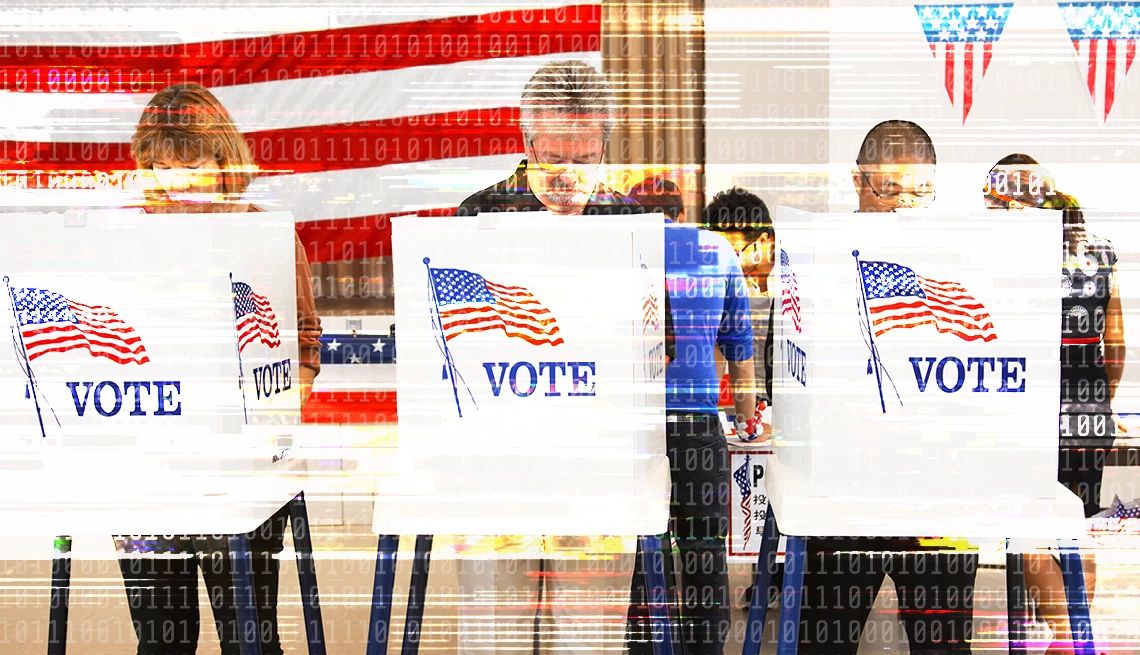
Experts warn of potential for ai-generated election deepfakes
- Select a language for the TTS:
- UK English Female
- UK English Male
- US English Female
- US English Male
- Australian Female
- Australian Male
- Language selected: (auto detect) - EN
Play all audios:

Election Day is less than two months away, and this is the first election cycle in which artificial intelligence is widely available. That means regardless of whom voters support, they must
work even harder to weed out false and misleading information before casting a ballot, experts told listeners to an AARP tele-town hall Thursday afternoon. Artificial intelligence tools that
can clone someone’s voice or generate convincing videos can make it difficult for voters to figure out what is and isn’t real. AI-generated “deepfakes” can be used to embarrass a candidate,
cast doubt on the conduct of an election or confuse people about when or where to vote, said Alexandra Reeve Givens, president and CEO of the Center for Democracy & Technology, which
tracks election disinformation. She pointed to the example this year of an AI-generated robocall impersonating President Joe Biden, which urged registered Democratic voters not to
participate in New Hampshire’s primary election. During an election in Slovakia this year, a deepfake audio recording made it appear as though a candidate planned to stuff ballot boxes, she
said. “We’re at a time in our country where there’s quite a lot of doubt around the conduct of elections, and there are some people who are actively trying to sow distrust in our public
elections and their infrastructure,” she said. “So I worry a lot about those types of fakes continuing to undermine public trust.” LEARN HOW AARP IS FIGHTING FOR YOU AARP is your fierce
defender on the issues that matter to people 50-plus. Read more about how we fight for you every day in Congress and across the country. Tim Harper, the center’s senior policy analyst for
elections and democracy, said people can spread misinformation unintentionally when they share it on their social media platforms, not knowing it is false or misleading. Online platforms
such as OpenAI (the start-up that created ChatGPT) and Meta (the parent company of Facebook) have warned about operations with ties to foreign governments that use AI to create fake social
media accounts — and populate them with a large number of posts and reactions — with a goal of shaping public opinion on political issues in the U.S., Harper explained. He warned about the
potential for bad actors to send fake text messages to large numbers of voters using publicly available precinct information with the help of AI, in an effort to keep people from voting. The
message may say something like “FYI, voting at Peace Auditorium is paused due to fire sprinklers,” he said. “That might be more persuasive to the average person because ... they do in fact
vote at Peace Auditorium.” JOIN OUR FIGHT FOR ACCESSIBLE VOTING Sign up to become an AARP activist on voting and other issues important to people 50 and older. Voters can best protect
themselves against disinformation by checking the origins of social media posts, visiting fact-checking websites such as Snopes and PolitiFact and seeking voting information from reliable
sources such as their election clerk, the experts told listeners. AARP, a nonpartisan organization, has worked hard to ensure voters have accurate information about when, where and how to
vote, said Lori Parham, who handles state policy for AARP government affairs. She said voters can turn to our 53 state and U.S. territory election guides for help navigating changing voting
rules in their state. Print versions of the guides appear in the September issue of the _AARP Bulletin_. Read more about election disinformation in the age of AI, and keep up with AARP’s
election coverage.
